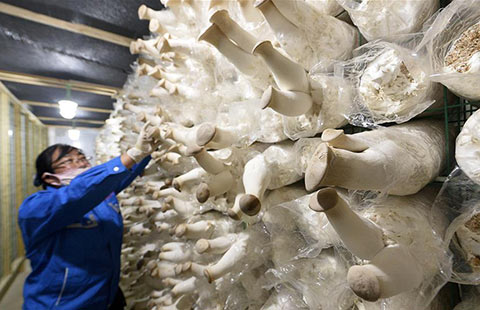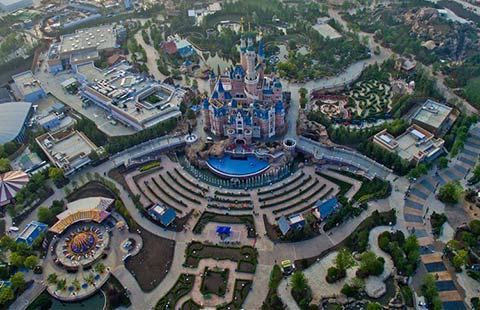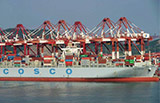For a new growth model
By Zhang Monan (China Daily) Updated: 2012-11-03 09:42China has to adjust its workforce, demand and industries if it wants to move toward a higher economic development level
Low cost-driven growth has seen China make rapid economic and social progress in the past decades, but now that it has reached a certain level of development it should transform its economic growth model.
China's per capita GDP was $5,414 in 2011, according to International Monetary Fund data. This means its economic and social development has entered a critical transitional stage. Economists believe that a country is on the verge of advancing from a middle-income to high-income society when its per capita GDP reaches the watershed mark of $4,000, which is bound to give rise to some changes in its economic and social development.
In the 1960s and 1970s, the per capita GDP of some countries in the West, Latin America and East Asia crossed $4,000, but their development in the years that followed were different because they adopted different development strategies.
Japan, the Republic of Korea and some developed Western countries succeeded in striding over the "critical threshold" by changing their industrial structures, developing some heavy industries and pushing for an export-substitution strategy. With these efforts, they transformed from a labor-intensive to technology-intensive economy and witnessed fast economic growth for more than a decade. As a result, the per capita GDP of some of those countries crossed $5,000, even $10,000, in the coming years.
However, things were rather different in some Latin American countries that enjoyed a similar development level in the 1960s and 1970s. The contradictions that marked their rapid development erupted when their per capita GDP dropped to about $3,000. They were overwhelmed by the contradictions because they failed to change some of their systems and institutions, which also caused their economic growth to decline sharply or become static.
These countries fell into the "middle-income trap" because they attached too much importance to their economic growth model for too long, while ignoring the significance of a fair wealth distribution. And the lack of a simultaneous income growth for the wider middle class caused domestic demand to stutter.
A country's economic growth is usually driven by its production factors, investment, innovation and its wealth accumulation. However, a country, after its per capita GDP crosses $4,000, should gradually abandon the dependence on resources, capital and investment to drive its growth and, instead, use technological innovations to boost its economic and social development. This is the model some developed countries embraced when their per capita GDP reached a certain level.
Corresponding changes will also emerge in a country's industrial structure when its per capita GDP crosses $4,000, which will be most prominent in the rise of its tertiary sector. The three-sector hypothesis tells us that the contribution of a country's primary (raw materials) sector to GDP will decline considerably, and its economic activity will shift to the secondary (manufacturing) sector and then to the tertiary (service) sector as its per capita GDP increases.
A per capita GDP of $4,000 or higher will boost a country's service sector and fuel a rapid increase in consumption, which will help make consumption and services the new driving force of its economic growth. A higher per capita GDP will also catalyze changes in a country's microeconomic structure.
In the initial period of industrialization, small and middle-sized enterprises usually serve as the most important industrial pillar. But a country's continuous economic development and entry into a post-industrialized era will transform its large enterprises and transnational companies into a driving force of economic development and push its per capita GPD to a higher level.
A country's workforce and employment structure will also experience some changes when its per capita GDP reaches a certain level. The history of economic development tells us that all developed countries once benefited from "demographic dividend".
But when their costs of production factors entered the period of a cyclic rise, they took some measures to improve the life and livelihood of their peoples and made changes in human resources-related fields. In particular, they made some profound changes in their labor division, industrial and employment structures, savings, investments and social security, which helped expand their economic and social development.
A country has to finally base its economic development on its capability to accumulate capital and efficiency to utilize resources. Industrialization based on excessive dependence on foreign capital will not last long. With China's economic development reaching a certain stage, it has to expand its outward investment as a way of achieving higher development. Making outward investment more efficient and sharpening the competitive edge of domestic capital will facilitate such a transformation.
Whether China can stride over the "middle- income trap" and move toward a higher level of economic development depends on whether it can make some much-needed changes in its workforce, demand, industrial structure and economic growth pattern.
The author is an economics researcher with the State Information Center.
- Mushroom cultivation bases established in Ningxia
- ZTE to launch VR-related mobile product, says its executive
- China's forex reserves rise to $3.22 trillion
- Central bank pledges to keep prudent monetary policy
- Chinese oil firms' assets affected by wildfire in Canada
- Shanghai Disneyland starts soft opening on Saturday
- IMF: Economic restructuring 'desirable'
- Expo shines light on next generation of jewelry pieces

















